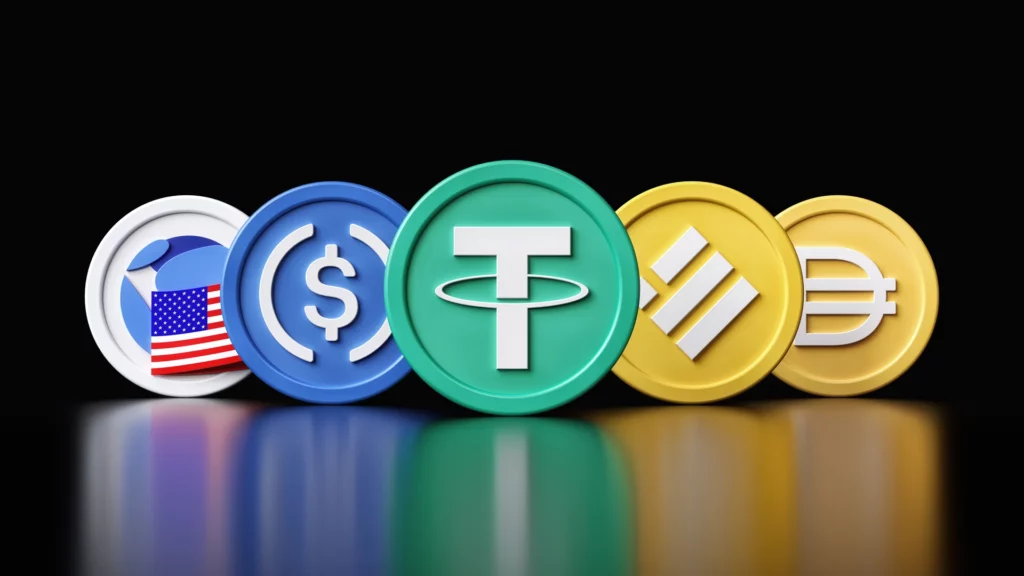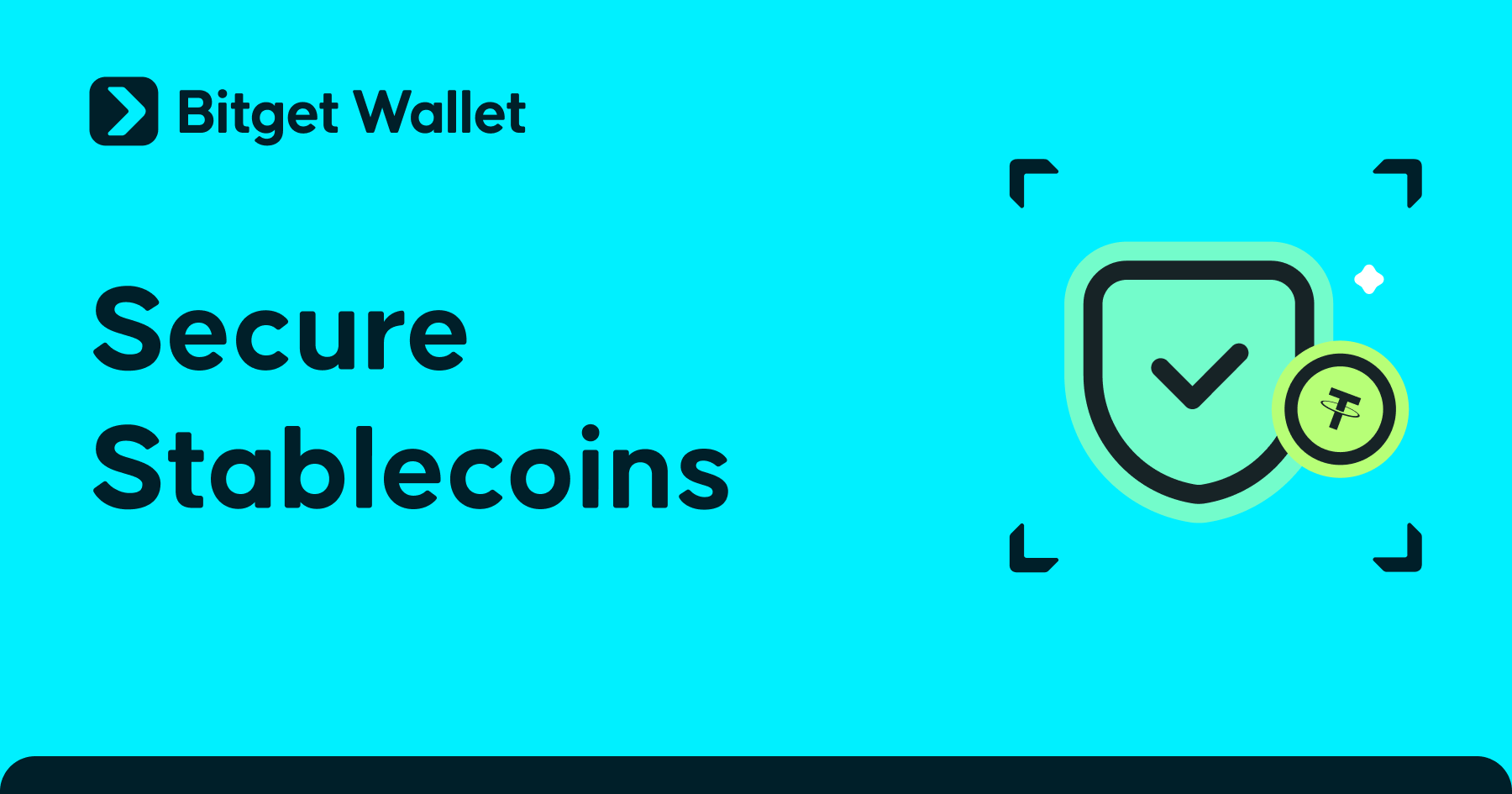What is Stablecoin? A Beginner’s Guide to Price-Stable Cryptocurrencies

Stablecoins are digital assets designed to keep their prices stable, often tied to traditional currencies like the USD. Unlike "roller coaster" cryptocurrencies like Bitcoin or Ethereum, stablecoins offer high reliability. Thanks to that, they are extremely ideal for everyday payments, savings, or "jumping into" the world of decentralized finance (DeFi).
Now, stablecoins have become the mainstay of the crypto world - used daily for transactions, DeFi activities, cross-border money transfers and more. More than that, they are the gateway to Web3 for millions of people. Stablecoins help you trade on the blockchain without worrying about fluctuating prices, thereby freely storing, transferring and profiting from crypto with a comfortable mind.
This article will dissect everything about stablecoins - from basic knowledge to risks and regulations. You will understand why they are vital to Web3 and how to use them safely to trade and store assets.
Key Takeaways
- Reduced price volatility: Stablecoins help limit sudden price increases and decreases, making them ideal for payments, savings accumulation, and DeFi.
- Diverse types: There are four main types: fiat-pegged, crypto-pegged, algorithmic, or commodity-pegged – each with different levels of stability, decentralization, and risk.
- Essential tools: Stablecoins are the “backbone” for international money transfers, trading, DeFi lending, and remittances.
What are Stablecoins & Why Are They Important?
Stablecoins are a type of cryptocurrency designed to keep their price stable. They do this by “pegging” their value to another asset (like the USD, gold) or using algorithms to self-balance. They combine the stability of traditional finance with advanced blockchain technology, making crypto a practical tool.

Source: CCN.com
What makes stablecoins different from Bitcoin or Ethereum?
While Bitcoin and Ethereum are volatile digital assets driven by market supply and demand, stablecoins are built to hold a consistent value—typically tied to USD, EUR, or another reference asset. This peg ensures that $1 of a stablecoin is always approximately worth $1, regardless of market swings.
Key differences:
- Purpose: BTC/ETH = investment/store of value | Stablecoins = medium of exchange/unit of account
- Volatility: BTC/ETH fluctuate daily | Stablecoins aim for price stability
- Adoption: Stablecoins are preferred for payments, lending, and DeFi due to predictability
What benefits do stablecoins offer over traditional cryptocurrencies?
Stablecoins offer the advantages of blockchain—speed, global access, low fees—without the unpredictable price swings of typical cryptocurrencies. This makes them more practical for daily use, saving, and smart contract applications.
Main benefits:
- Price Stability: Users can transact or store value without worrying about sudden losses
- Ease of Use: Pegged to familiar currencies like USD, making value intuitive
- Key to DeFi & Payments: Power decentralized lending, trading, and cross-border transfers
- Bridge to TradFi: Serve as a crypto-native version of fiat, useful for onboarding new users and businesses
Thanks to these features, stablecoins are becoming the backbone of the digital economy, powering everything from decentralized apps (dApps) to cross-border commerce.
What Are Types of Stablecoins?
Stablecoins come in several forms, depending on what asset or mechanism is used to maintain price stability. Each type has different trade-offs in terms of security, decentralization, and risk.
1. Fiat-Backed Stablecoin
Fiat-backed stablecoins are digital tokens fully collateralized by fiat currencies like USD or EUR. They maintain a 1:1 peg through reserves held by regulated institutions, allowing users to redeem them for cash anytime.
Examples: USDT (Tether), USDC (Circle)
Advantages:
- Simple and reliable peg mechanism
- High liquidity on centralized exchanges
Risks:
- Centralized control by issuing company
- Concerns over reserve transparency (e.g., past USDT audit issues)
2. Crypto-Backed Stablecoin
Crypto-backed stablecoins are collateralized by other cryptocurrencies like ETH or BTC. To absorb market volatility, they require over-collateralization—locking up more value than the stablecoin issued. Smart contracts handle issuance and liquidation automatically.
Example: DAI (MakerDAO)
Advantages:
- Fully decentralized and censorship-resistant
- No reliance on centralized issuers
Risks:
- Smart contract vulnerabilities
- Collateral volatility can lead to liquidations
3. Algorithmic Stablecoin
Algorithmic stablecoins maintain price stability without collateral. They use code-based mechanisms to adjust token supply based on price—minting when above $1 and burning when below—to keep the peg stable.
Example: UST (Terra)
Advantages:
- Capital efficient, no need for reserves
- Fully decentralized supply control
Risks:
- Prone to collapse if confidence is lost
- Historical failures (e.g., Terra UST crash in 2022)
4. Commodity-Backed Stablecoin
Commodity-backed stablecoins are pegged to real-world assets like gold, oil, or real estate. Each token represents a physical asset held in custody, enabling blockchain-based ownership of commodities.
Example: PAXG (1 token = 1 ounce of London gold)
Advantages:
- Easy access to commodity investment
- Backed by tangible assets
Risks:
- Storage and audit costs
- Less liquid than fiat-backed alternatives
What Are the Top Stablecoins to Know in 2025?
Here are the top four stablecoins dominating the market in 2025, based on adoption, liquidity, and use in DeFi and exchanges:
| Stablecoin | Type | Backed By | Strengths | Weaknesses |
| USDT | Fiat-backed | USD | Highest liquidity, widely accepted | Centralized, transparency concerns |
| USDC | Fiat-backed | USD | Regulated, transparent reserves | US-centric, semi-centralized |
| DAI | Crypto-backed | ETH, USDC, others | Decentralized, DeFi-native | Complex mechanics, risk of depeg |
| FDUSD | Fiat-backed | USD | Backed by First Digital Trust (HK) | Newer, still gaining adoption |
Each of these stablecoins plays a unique role within the Web3 economy. While USDT dominates in global exchange volume, USDC is often the preferred choice for regulated DeFi protocols. DAI stands out for its decentralized nature, and FDUSD is emerging as a strong contender in Asia’s regulatory-friendly jurisdictions.
Why Do USDT, USDC, DAI, and FDUSD Dominate the Market?
These leading stablecoins dominate the crypto market thanks to five key factors:
- Strong Price Peg Mechanisms: Backed by fiat reserves (like USD) or crypto assets, these stablecoins maintain a ~1:1 value ratio consistently.
- Deep Liquidity: With massive trading volumes and availability on most major CEXs, DEXs, and blockchains, they’re extremely easy to buy and sell.
- Ecosystem Integration: Widely used for payments, DeFi collateral, cross-border transfers, and Web3 utilities — they act like the "lifeblood" of the crypto economy.
- Transparency and Auditing: USDC and FDUSD publish regular reserve audits, while DAI’s backing is fully transparent on-chain — helping build user trust.
- Regulatory Compliance: These projects actively align with legal frameworks in the U.S., EU, and Asia — minimizing legal risks for users and institutions.
How to Compare and Choose the Right Stablecoin?
Choosing the right stablecoin depends on your personal needs. This table helps you make a smarter decision:
| Criteria | Top Picks |
| Liquidity & Popularity | USDT, USDC → USDT leads globally; USDC excels in fiat on/off ramps and has strong institutional backing. |
| Decentralization | DAI → Operated by smart contracts and ideal for DeFi enthusiasts who value decentralization. |
| Centralization Risks | USDT, USDC → Convenient but rely on issuing companies and are subject to regulatory control. |
| Reserve Transparency | USDC, FDUSD → Both have clear third-party audits. USDT is dominant but has faced past scrutiny over reserves. |
| Regional Advantages | FDUSD → Gaining significant traction in Asia. Choose stablecoins that align with local regulations for smoother transactions. |
Why Are Stablecoins Important in the Web3 Economy?
Stablecoins serve a wide range of practical purposes in the Web3 world — making their importance undeniable. Let’s explore the core roles of stablecoins through their most impactful use cases below.
1. Global Payments & Remittances
Enable fast, low-cost cross-border transfers. No banks or FX needed. Ideal for sending money globally 24/7, especially in underserved regions.
2. DeFi Lending & Staking
Serve as primary assets for DeFi activities (lending, staking, yield farming). Price stability lets users earn interest or borrow safely without volatility risk.
3. Payroll & Commerce
Web3 companies/DAOs pay salaries in stablecoins (e.g., USDC, DAI) for stable, borderless income. Widely used for frictionless international trade payments.
4. Pricing Benchmark
Act as quote currencies (USDT/USDC) on CEXs/DEXs. Simplify trading, boost liquidity, and enable automated strategies by pricing volatile crypto assets.
Stablecoin vs. Bitcoin – What’s the Difference?
Although both stablecoins and Bitcoin are cryptocurrencies, they serve very different purposes within the digital asset ecosystem.
Is Bitcoin a stablecoin?
No. Bitcoin lacks price stability and isn’t pegged to any asset. Its value fluctuates freely, functioning as decentralized digital gold rather than a stable medium of exchange.
| Stablecoin | Stablecoin | Bitcoin |
| Price Volatility | Low (pegged to fiat or asset) | High (market-driven) |
| Use Case | Payments, savings, DeFi, trading pair | Long-term investment, store of value |
| Supply Mechanism | Issued/redeemed based on peg model | Fixed supply (21 million BTC) |
| Stability | Engineered to remain stable | Prone to high price swings |
| Role in Ecosystem | Utility-focused, transactional | Speculative, inflation hedge |
How Do Stablecoins Complement Bitcoin in User Portfolios?
Stablecoins and Bitcoin serve different but complementary roles:
- Bitcoin offers long-term growth and acts as a hedge against inflation.
- Stablecoins provide short-term stability, ideal for payments, DeFi, and preserving capital during market swings.
Together, they balance volatility and utility — letting users benefit from Bitcoin’s potential upside while using stablecoins for everyday liquidity and risk management.
What Are the Key Risks of Using Stablecoins?
Stablecoins seem safe thanks to their stable prices, but they contain unpredictable risks – you must understand them before using them for payments, savings or "plunging" into DeFi.
1. Depegging and Its Impact on User Assets
The biggest risk is depeg – when the stablecoin plummets and cannot maintain a 1:1 exchange rate with the underlying asset (like USD).
The classic case is UST (TerraUSD) in 2022: a terrible collapse due to algorithmic errors, burning billions of dollars of user assets in just a few hours.
2. Lack of Transparent or Sufficient Reserves from Issuers
Many USD-pegged stablecoins (like USDT) have been questioned about whether they have enough real reserves.
If not regularly independently audited, you risk holding "empty" tokens – especially when the market is selling off massively.
3. Smart Contract Flaws in Crypto-Backed Stablecoins
Stablecoins that use crypto as collateral (like DAI) rely on extremely complex smart contracts.
A single exploitable code bug, or a sudden drop in the price of the collateral, can wipe out your assets in an instant.
4. Legal and Regulatory Uncertainties Affecting Holders
Stablecoins are facing legal hurdles in countless countries.
A single unexpected change from the government could:
- Restrict stablecoin trading
- Force exchanges to delist
- Get holders in trouble for non-compliance
How Are Stablecoins Regulated Around the World?
Stablecoins have become too big to ignore. As their use spreads across DeFi, payments, and remittances, regulators in major economies are rushing to catch up. Their goals include ensuring consumer protection, financial stability, and combating illicit activity — but their approaches vary widely.
1. United States
The U.S. treats stablecoins as a growing systemic concern. Key developments include:
- The STABLE Act: Proposes that stablecoin issuers hold bank charters and maintain equivalent reserves.
- FSOC Reports: Highlight stablecoins as potential threats to financial stability if left unregulated.
- SEC & CFTC Involvement: Monitor activities that blur the lines between payments, securities, and commodities — especially in DeFi contexts.
Read more: What Is the GENIUS Act? U.S. Stablecoin Regulation Explained (2025 Guide)
2. European Union
The EU has emerged as a regulatory leader in the stablecoin space:
- MiCA Framework (effective 2023): Clearly defines rules for “asset-referenced tokens” (ARTs).
- Requires official issuance licenses, audited reserves, and regular disclosures.
- Aims to protect users and create a harmonized market across all EU member states.
3. Asia-Pacific
The region shows both regulatory extremes:
- Singapore & Japan:
- Offer supportive environments with clear licensing and compliance structures.
- See stablecoins as crucial for innovation in digital finance.
- China:
- Maintains a blanket ban on all private cryptocurrencies, including stablecoins.
- Promotes its central bank digital currency (CBDC), the digital yuan, as a state-backed alternative.
How Can You Use Stablecoins Safely in 2025?
Stablecoins may be “stable,” but that doesn’t mean zero risk. To use them effectively in 2025, you need to follow best practices and choose the right tools for storage and transactions.
1. What are the best practices when choosing and using stablecoins?
To reduce risks from depegging, counterparty exposure, or smart contract flaws, users should apply strict selection criteria and follow best practices when dealing with stablecoins.
- Check the reserve model: Prefer fully backed stablecoins (like USDC or FDUSD) with regular third-party audits.
- Avoid algorithmic stablecoins: They’re more vulnerable to depegging and market crashes (e.g., TerraUSD).
- Verify issuer credibility: Choose tokens from licensed, transparent, and compliant issuers.
- Use DeFi with caution: Yield farming with stablecoins can offer returns, but smart contract risks still apply.
- Diversify: Don’t put all funds in one stablecoin—diversify across multiple assets and chains.
- Stay informed: Follow regulatory updates, especially if you use stablecoins for cross-border payments or business.
2. How does Bitget Wallet help you manage, store, and swap stablecoins securely?
Bitget Wallet provides a secure, user-controlled environment for managing stablecoins, with support for over 130 blockchains and advanced risk protection.
- Own Your Crypto, Always: With full self-custody, you hold the keys—no banks, no third parties, just total control.
- Seamless Multi-Chain Experience: Manage all major stablecoins (USDT, USDC, DAI, FDUSD…) across EVM chains, Solana, and more—in one powerful app.
- 1-Click Swaps, Zero Hassle: Instantly swap stablecoins or bridge to crypto with the best rates from integrated DEX aggregators.
- Smarter Stablecoin Decisions: Use built-in analytics to monitor price stability, liquidity, and whale activity—right from your wallet.
- Real-World Spending Made Easy: With the Bitget Wallet Card (2025), pay with stablecoins anywhere—just like cash, but smarter.
FAQs About Stablecoins
1. What is a stablecoins?
Stablecoin is a cryptocurrency with a stable value, “anchored” to real assets such as USD, gold, or other cryptocurrencies. Unlike Bitcoin or Ethereum, which often fluctuate strongly, stablecoins keep their prices almost unchanged - ideal for payments, savings, and secure DeFi.
2. Is Bitcoin a stablecoin or something else?
No, Bitcoin is not a stablecoin. It’s a volatile cryptocurrency whose price constantly fluctuates based on supply and demand. In contrast, stablecoins are engineered to stay close to $1, offering more predictable value for everyday use.
3. What’s the best wallet to store and use stablecoins?
An ideal wallet needs to be highly secure, support multiple chains, and have a built-in DEX so you can swap stablecoins anytime, without an exchange. Bitget Wallet meets all three of these criteria, while also supporting centralized stablecoin management, low transaction fees, and security with a hardware wallet.
Conclusion – Why Bitget Wallet Is the Smartest Choice for Stablecoin Users
Stablecoins are unlocking a new era in Web3—bringing stability to the decentralized world. From earning yield in DeFi protocols to making instant global payments, stablecoins bridge the gap between traditional finance and crypto innovation. For users who want to explore Web3 without the volatility of assets like Bitcoin or ETH, stablecoins offer a reliable on-ramp and daily utility.
To fully tap into these opportunities, you need a wallet that’s fast, secure, and purpose-built for stablecoin management. Bitget Wallet checks every box—supporting USDT, USDC, DAI, and more across multiple blockchains. With built-in DeFi tools, powerful swap engines, and ironclad security, Bitget Wallet is the smartest way to store, use, and grow your stablecoin portfolio in 2025.
👉 Ready to take control of your crypto journey? Download Bitget Wallet now and experience the next level of stablecoin convenience.
- What Is QCAD: A Complete Guide to Canada’s Regulated CAD Stablecoin2025-11-28 | 5 mins


















